While both Globe Artichokes and Jerusalem Artichokes have the word “artichoke” in their name, they are actually wildly different plants. They may have similar culinary uses, but the way they grow and look is very different. So what is the difference between the Globe Artichoke and Jerusalem Artichoke? And how are they similar? Let’s take a look!
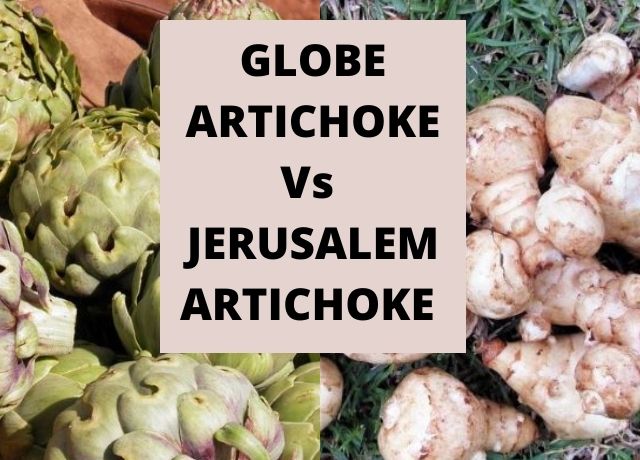
Table of Contents
- Are Globe Artichoke and Jerusalem Artichoke in the Same Family?
- The Difference Between Globe Artichokes and Jerusalem Artichokes
- How to Distinguish Globe Artichoke from Jerusalem Artichoke
- How do Globe Artichokes and Jerusalem Artichokes Taste?
- Growing Globe and Jerusalem Artichokes
- Cooking and Recipes for Globe and Jerusalem Artichokes
- Eating Other Parts of Artichokes
- Some of My Favorite Kitchen Items:
Are Globe Artichoke and Jerusalem Artichoke in the Same Family?
No, Globe Artichoke and Jerusalem Artichokes actually come from two different plant families.
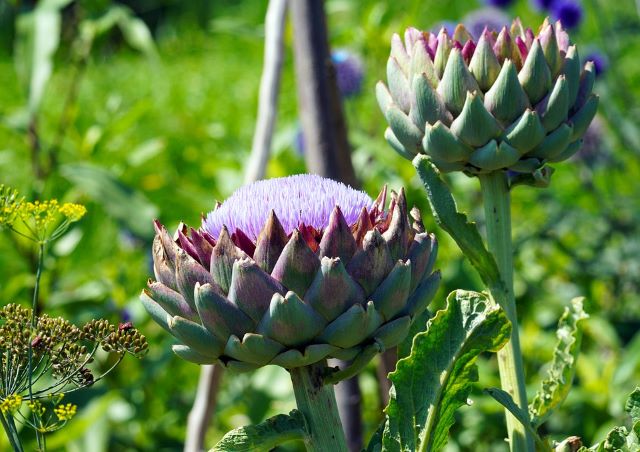
Globe artichokes, also called common artichokes, are cynara cardunculus var. scolymus. They are a thistle-like plant with purple flowers. They originated in the Mediterranean area, and first made their way to the US sometime in the 19th century. However, they’ve been grown for food in other places for centuries before that.
Jerusalem artichokes, or sunchokes, are helianthus tuberosus. Unlike globe artichokes, they are actually a type of sunflower. This variety of artichoke is native to North America, and has been cultivated by Indigenous people for a very, very long time.
Aside from being from different families, what are the other differences between these two vegetables?
The Difference Between Globe Artichokes and Jerusalem Artichokes
Aside from their family, the biggest difference between Globe Artichokes and Jerusalem Artichokes is what part of the plant they are. Globe artichokes are the flower bud of the plant they grow on. Jerusalem artichokes, though, are root vegetables: they are the edible tuber of a sunflower plant.
Because of this, the two artichokes look very different, and I’ll tell you how to distinguish the two of them soon. However, they are used in very similar ways.
Both plants are often used as decorative plants, not just for food, because they have very beautiful flowers and make a nice addition to any landscape.
Now, let’s talk about how to tell Globe Artichokes from Jerusalem Artichokes.
How to Distinguish Globe Artichoke from Jerusalem Artichoke
Both in the store and on the plant, these two artichokes are easy to tell apart. They’re shaped differently and have different colored flowers.
Globe Artichokes are the immature flower bud of their plant. Once harvested, they look like what you think of when you hear artichoke; they’re small, round, and green, with short stems. It’s important to note that the stems, as well as the “hairy” part below the bud (the choke) are not edible, only the artichoke bud itself and some of the artichoke petals.
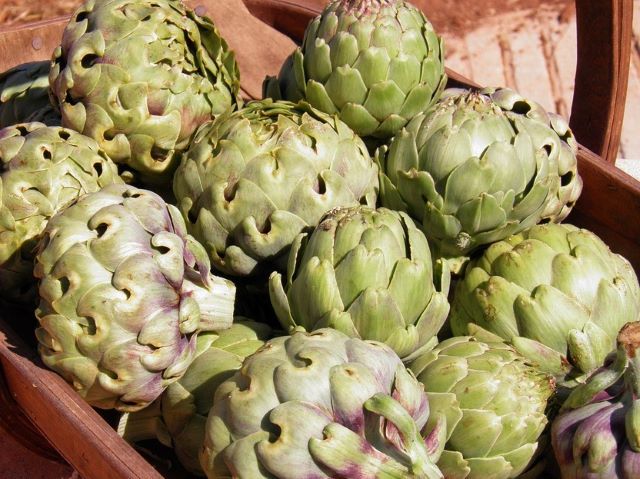
On the other hand, Jerusalem Artichokes come from the root of a sunflower plant. Once harvested, they look closer to culinary ginger than they do to other artichokes. Jerusalem Artichoke tubers are small, knobby, and brown, with tough skin.
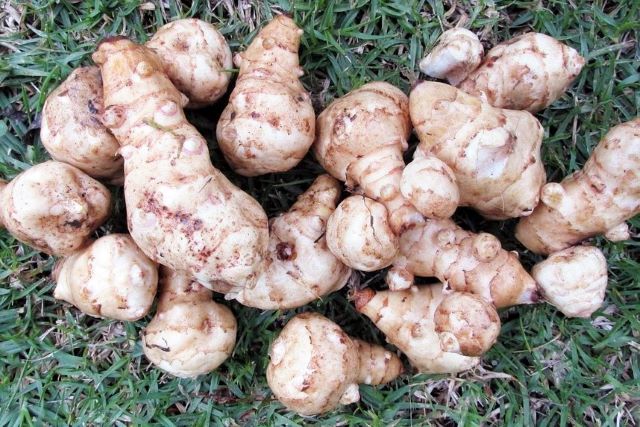
The plants also look very different. Globe Artichokes look thistly and have wide purple flowers if the buds are allowed to mature. Jerusalem Artichokes are a sunflower plant, and thus look similar to sunflowers. Both look great as ground cover — and you could possibly even use them both to add a lot of color to your garden!
How do Globe Artichokes and Jerusalem Artichokes Taste?
Even though they are very different plants, both of these artichokes share some similar flavors. However, there are differences.
Globe Artichokes are firm and taste slightly bitter, with a very mild nutty flavor. They are similar to asparagus or brussel sprouts as bitter greens. When cooked, Globe Artichokes soften up, giving them a texture more akin to boiled potatoes.
The taste of Jerusalem Artichokes also have a slightly nutty flavor, but are less bitter and more savory. Some people describe them as a cross between an artichoke and a potato. As a root vegetable, Jerusalem Artichokes are fairly tough on the outside, but when cooked the inside can be softened quite a bit.
Growing Globe and Jerusalem Artichokes
Both Jerusalem Artichokes and Globe Artichokes are perennials that are surprisingly easy to grow. However, they do have different needs when growing.
Growing Globe Artichokes
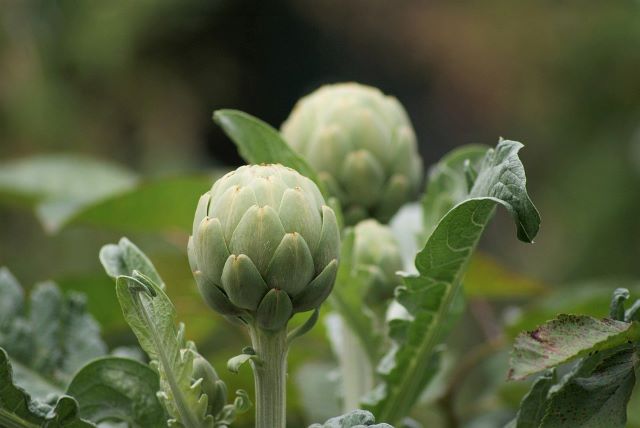
Let’s start with Globe Artichokes. They should be planted in March or April — you can start them indoors if the soil hasn’t warmed up yet, or sow them directly into the soil if the last frost has passed.
Globe Artichokes need full sun, meaning at least six hours of direct sunlight every day. They should also have a well-draining soil with some organic matter mixed in, or fertilizer to help them grow.
Once established, Globe Artichokes are pretty resistant to drought. However, you shouldn’t let them dry out for too long, and will need to water during dry spells. It’s especially important to make sure they get enough water when flowering.
Harvest Globe Artichokes when the flower buds have grown but before they start to open. Depending on the variety, the size may be roughly 4-5 inches (10-12cm) in diameter. Often, after harvesting, new offshoot buds will grow, which can be harvested later. You can also split the plants every three or four years to keep them growing and producing well.
Growing Jerusalem Artichokes
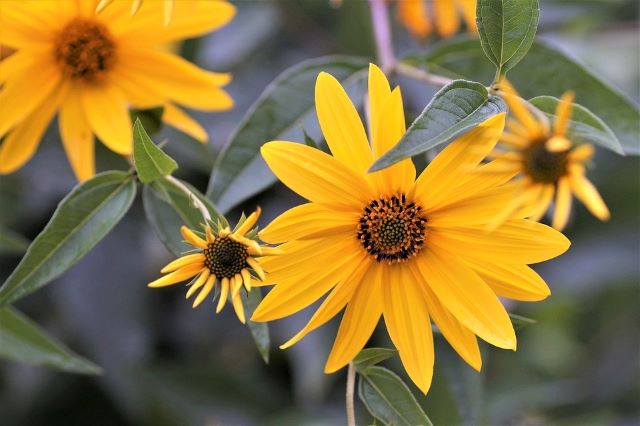
Jerusalem Artichokes can also be planted in March or April, although for this you will be planting tubers, not seeds. These are very hardy plants, and can thrive in conditions that are less than ideal. Although of course, for best results, you want to give them the best conditions possible.
Jerusalem Artichokes can grow in sunny or somewhat shady areas. They will do well in many soils, but do best if the soil has a lot of organic matter added to it — time to put that compost pile to good use!
Once established, Jerusalem artichokes are fairly self-sufficient. Only water them during periods of drought, and they shouldn’t need any supplemental feeding.
You can harvest Jerusalem Artichokes as needed from October all the way through February. You can gently dig up the tubers, which will stay good for a while, making for a great winter ingredient. In the autumn, when the leaves start to yellow, cut the plants down to about three inches above ground level.
Cooking and Recipes for Globe and Jerusalem Artichokes
Both of these artichokes can be cooked in similar ways, although there are some differences. Both Globe and Jerusalem Artichokes can be steamed or boiled, which will soften them up and give them a much more rich texture.
Globe and Jerusalem Artichokes are both also common ingredients in stews, as the hours of cooking softens the vegetables to the point that they almost melt in your mouth. Though Jerusalem Artichokes are used in stews a little more often than Globe Artichokes.
Cooking With Jerusalem Artichokes
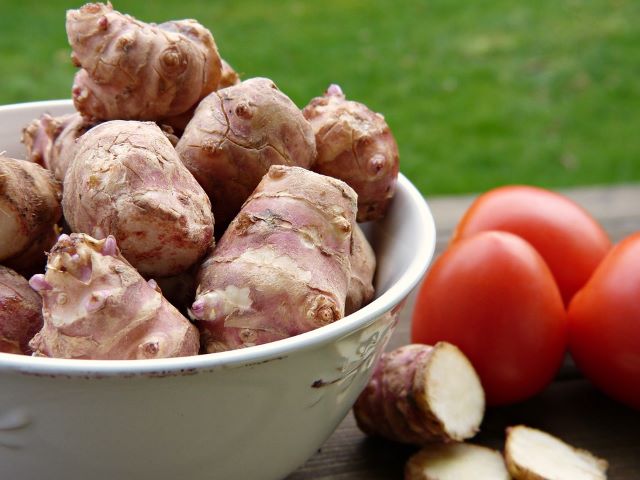
Jerusalem artichokes can also be sauteed on the stove. Because they’re tough, though, it’s much more common for them to be boiled, or any other cooking method that will help soften them up.
Often, Jerusalem Artichokes are also fried into chips or similar dishes. They can also be eaten raw, and with a dip — what if you dipped one of these into a spinach and artichoke dip?
Recipe Ideas for Jerusalem Artichokes
Here are some recipes that highlight the wonderful flavors of Jerusalem artichokes:
Smashed Sunchokes with Thyme Butter
Winter Vegetable Stew with Sunchokes
Cooking with Globe Artichokes
Globe Artichokes are more common in grocery stores, and thus have a lot more culinary uses than what was listed above. Sometimes, they’re even eaten raw.
As they are similar to brussel sprouts, you can cook a Globe Artichoke any way you can cook a brussel sprout. Like Jerusalem Artichokes, cooking methods that soften the vegetable are more common.
It’s also quite common to stuff Globe Artichokes, with anything from cheese to other vegetables to meat. You can get quite creative when cooking with artichokes.
Lastly, Globe Artichokes are sometimes used on pizza. In Italy, they are a common addition to the “four seasons” pizza. And of course, I have to mention spinach and artichoke dip — who doesn’t love that?
Recipe Ideas for Globe Artichokes
Here are some recipes using Globe Artichokes, including one for that common dip we all love:
Eating Other Parts of Artichokes
While you may want to get the most you can out of these plants, you may be limited to the buds of Globe Artichokes, and the tubers of the Jerusalem variety.
For Globe Artichokes, the buds and petals are the edible parts. The choke and rest of the plant are not edible. Though some say the first couple of inches of stem below the bud are tender and delicious along with the choke of baby artichoke.
Jerusalem Artichokes have delicious tubers, but it doesn’t seem that people tend to eat the leaves or flowers. While you can feed them to livestock, it’s probably best to avoid eating them for yourself.
Some of My Favorite Kitchen Items:
Related reading:
- Turnips Vs Radishes: What’s The Difference?
- Why are Burpless Cucumbers Called Burpless?
- Are Carrots a Fruit or a Vegetable? Answered!
- Pomelo Fruit: What is a Pomelo and How to Eat One
- Galangal Vs. Ginger: What’s the Difference?
- 7 Reasons Globe Artichokes Are Small (With Solutions)
- Perennial Vegetables to Plant Once and Harvest Forever
